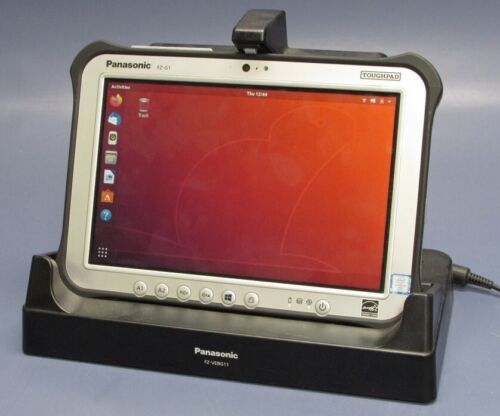In the world of technology enthusiasts, the quest for a cheap homelab server is becoming increasingly popular as more people seek to harness the power of their devices at home. Creating a home server setup doesn’t have to break the bank; instead, it can be built using old equipment or even mobile devices. One innovative approach involves transforming an outdated Android phone into a low power server. With tools like postmarketOS, this method allows you to run applications like Home Assistant efficiently, proving that affordability doesn’t have to compromise functionality. Whether you want to dive into new projects or simply test out servers, exploring these budget-friendly options reveals endless possibilities for those keen to build a homelab without the hefty price tag.
The journey to create a home server, often dubbed as setting up a digital ecosystem, can be both rewarding and enlightening. Rather than investing in expensive rack-mounted systems or high-end hardware, many tech enthusiasts are discovering alternative methods, such as repurposing older devices like an Android smartphone. This alternative not only showcases the versatility of mobile technology but also promotes a low-cost, eco-friendly approach to computing. By leveraging operating systems like postmarketOS designed for lightweight performance, one can easily establish a compact and efficient server environment. Ultimately, this trend emphasizes that even basic setups can yield significant capabilities, inviting more individuals into the world of homelabbing regardless of their budget.
Building a Low-Cost Homelab Server with an Android Phone
Creating a homelab server doesn’t have to involve investing in expensive, high-performance hardware. Taking a unique and innovative approach, many enthusiasts are now building low-cost homelabs using devices like old Android phones. Utilizing your outdated smartphone as a server taps into a vast potential for home automation projects. For instance, with applications such as Home Assistant, users can manage devices such as lights and thermostats efficiently without the need for dedicated, power-hungry servers. The beauty of this approach lies in the availability of powerful hardware even in older devices, proving that building a homelab can be an accessible adventure for anyone.
Not only does this method save money, but it also dramatically reduces energy consumption. An Android phone, when set up correctly, can operate at incredibly low power levels—around one watt when idle and up to six watts during stress tests. This makes it a prime candidate for those interested in a home server setup that is eco-friendly and economical. By following steps outlined in tutorial videos, individuals can explore how to repurpose their old devices, breathing new life into them as they create their personalized homelabs.
Setting Up a Home Server with postmarketOS
When deciding to turn an Android phone into a server, choosing the right operating system is crucial. One notable option is postmarketOS, which is designed to breathe new life into older smartphones, providing a Linux environment that is familiar to many tech enthusiasts. This operating system is particularly appealing for those who prefer using Linux due to its light resource requirements and the flexibility it offers for running various applications. By installing postmarketOS, users can unlock their phone’s full potential, transforming it from a mere communication device into a capable home server.
Setting up postmarketOS may come with a learning curve, but the journey is worth it for those looking to streamline their home automation systems or run low-power applications. It allows for straightforward access to tools like Docker, which can aid in managing containerized applications. Many users may also explore leveraging their devices for additional functionalities such as running a Minecraft server, proving that even a low-cost home server can pivot into an entertainment hub if desired.
The Advantages of Using a Cheap Homelab Server
Investing in a cheap homelab server highlights the benefits of choosing cost-effective solutions over extravagant setups. As demonstrated by the example of using an Android phone, individuals can engage in home lab experimentation without breaking the bank. This approach not only curbs costs significantly but also pushes back against the notion that homelabbing is only for the affluent or those with unlimited resources. The materials used—such as a worn-out smartphone and a few DIY power modifications—show how creativity and resourcefulness can lead to great innovation.
Furthermore, a cheap homelab server offers a unique opportunity for learning and development. It invites beginners to explore fundamental concepts of server management, networking, and automation without the fear of high costs associated with traditional servers. Users can dive into various projects, from home automation to game hosting, enabling hands-on experience that enhances their understanding of technology without substantial financial investment.
Cloud Alternatives vs. Local Homelabs
With the rise of cloud computing solutions, many individuals have started questioning the need for local homelabs. While cloud services offer scalability and ease of access, they may come with ongoing subscription costs that add up over time. By setting up a homelab, especially using low-cost servers like an Android phone, users can retain control of their data, manage their applications, and potentially avoid these recurring fees. A local homelab provides a unique blend of independence and flexibility that is not easily realized through cloud services.
Moreover, local homelabs support privacy-focused goals, allowing individuals to keep sensitive data within their own space. This is particularly valuable in today’s data-centric world, where issues like privacy and data ownership are of increasing concern. By utilizing affordable homelabs, more people can engage in tech experiments that prioritize control over their technological footprint, enhancing their understanding of personal data management.
DIY Modifications for Optimal Performance
Transforming an Android phone into an efficient server necessitates more than just installing software; it often involves physical modifications to optimize performance. For instance, the experiment detailed in Hardware Haven required removing the battery and connecting the device directly to a USB power source to prevent downtime. Such modifications ensure that the phone is always powered and ready to perform tasks, significantly enhancing its effectiveness as a homelab server.
Engaging in DIY modifications not only improves functionality but can also be a fun and educational experience. Users learn about voltage specifications, power management, and hardware modifications while experimenting with their devices. These enhancements can range from simple battery removal to more complex adjustments involving charge controllers and voltage regulators. Embracing such modifications empowers new homelab enthusiasts to leverage old technology ingeniously.
Maximizing Resource Efficiency in Your Homelab
Resource efficiency is a fundamental component of any successful homelab setup. Deploying an old Android phone as your server exemplifies how to access necessary computational power while conserving energy. The ability to manage resources effectively—like power consumption, hardware usage, and application performance—ensures that the server runs economically, fulfilling the user’s needs without excess waste.
Additionally, optimizing software installations for varying workloads plays a vital role in maximizing homelab performance. Utilizing low-impact applications that suit the capabilities of the device ensures a balanced operation, which can prove beneficial in managing resources. By monitoring the server’s performance and adjusting configurations, users can maintain an effective homelab that fulfills their operational requirements while remaining cost-efficient.
Home Assistant: A Powerful Tool for DIY Projects
Home Assistant represents an incredible opportunity for tech enthusiasts looking to establish a smart home environment. By running this software on a cheap homelab server, such as an Android phone, users can automate and control various aspects of their home. Home Assistant supports a plethora of smart devices and protocols, allowing for responsive and cohesive automation systems.
What sets Home Assistant apart is its open-source nature, flexibility, and active community. Users can easily integrate their devices, create custom automations, and even work with various third-party services. Assembling a homelab to host Home Assistant opens the door to a wide array of project possibilities, sparking creativity in the DIY home automation scene.
Troubleshooting Common Challenges in Homelab Setups
Setting up a homelab, especially with unconventional hardware like an Android phone, can lead to numerous challenges. One common difficulty arises from network configurations, particularly if the device is not meant to function as a regular server. For instance, issues may crop up concerning connectivity, software compatibility, and resource allocation, especially when the device is being pushed to its limits with demanding applications.
Navigating these challenges can be a valuable learning experience. Seeking help from community forums, engaging with fellow enthusiasts, or watching tutorial videos could provide solutions to many obstacles faced during the setup. Embracing these challenges not only helps in troubleshooting current problems but also builds a solid foundation of knowledge for future projects and enhancements in the homelab.
The Future of Homelabbing: Trends and Innovations
As technology continues to evolve, so too does the concept of homelabbing. Emerging trends indicate a growing interest in using older devices—such as smartphones and low-power servers—as centerpieces for personal technology exploration. The push towards resource conservation and cost-effectiveness reflects a shift in how enthusiasts approach setting up their servers, paving the way for more innovative and practical solutions.
Looking forward, advancements in software will likely expand the horizons of what is achievable in a homelab environment. As new open-source projects arise, users will find even more ways to repurpose existing hardware, making it possible to create customized solutions that align perfectly with their needs. The future of homelabbing promises to be exciting, showcasing creativity and innovation in how we integrate technology into our homes.
Frequently Asked Questions
What is a cheap homelab server, and how can I build one?
A cheap homelab server can be built using repurposed hardware or low-cost devices, like an old Android phone. You can set up a home server setup by installing lightweight software such as Home Assistant or postmarketOS on your device. This allows you to manage smart home applications without the need for expensive equipment.
Can I use an Android phone as a cheap homelab server?
Yes, using an Android phone as a cheap homelab server is a viable option. By installing postmarketOS or similar lightweight operating systems, you can turn your outdated smartphone into a functional server for various applications, such as Home Assistant.
What are the benefits of a low power server for my homelab?
A low power server, like a repurposed Android phone, offers significant benefits such as reduced electricity costs and a smaller carbon footprint. These devices can run essential applications while consuming minimal power, typically around 1 watt when idle.
What software can I run on a cheap homelab server built with an old smartphone?
You can run various software on a cheap homelab server like Home Assistant for home automation or even lightweight Linux distributions such as postmarketOS. These options allow you to maximize the potential of your hardware without needing high-end specifications.
Is postmarketOS a good choice for a homelab server setup?
Yes, postmarketOS is an excellent choice for a homelab server setup, especially on older smartphones. It provides a lightweight Linux environment that can effectively host applications while remaining resource-efficient.
What modifications are necessary for turning a smartphone into a server?
To turn a smartphone into a server, you might need to make modifications such as supplying direct power from a USB charger and ensuring a stable network connection. It’s advisable to remove the battery and use components like a diode to manage voltage levels.
Can a cheap homelab server meet my needs for running a Minecraft server?
While a cheap homelab server using an old smartphone can handle lightweight applications like Home Assistant, it may struggle with more demanding tasks like running a Minecraft server, due to limitations in Java and hardware capabilities.
What are the challenges of using an Android phone as a homelab server?
Some challenges include hardware constraints, such as limited processing power and potential overheating. Additionally, managing software configurations and troubleshooting issues like firewall settings can complicate the setup.
| Key Point | Details |
|---|---|
| Concept of a cheap homelab server | Creating a homelab server doesn’t have to be extravagant; a refurbished smartphone can serve this purpose. |
| Using an Android phone as a server | An old Android phone can run applications like Home Assistant effectively. |
| Choice of operating system | postmarketOS was chosen for better compatibility on older hardware. |
| Power modifications | The phone was modified for constant power supply using a USB charger and diode. |
| Power consumption | Power usage is only 1 watt when idle and 6 watts under stress. |
| Affordability | This approach counters the notion that homelabbing is expensive and exclusive. |
| Challenges faced | Firewall setup and potential issues with software compatibility were significant challenges. |
Summary
A cheap homelab server can be created using just an old Android phone, demonstrating that advanced server capabilities don’t necessarily require high-end hardware. This innovative approach by [Hardware Haven] highlights the affordability and functionality of utilizing outdated devices for smart home automation and server tasks. With the right operating system and minimal modifications for power supply, anyone can set up a personal server without breaking the bank.












